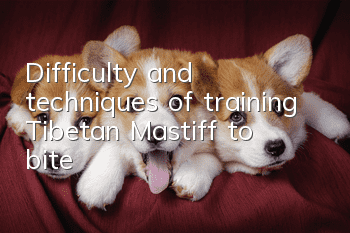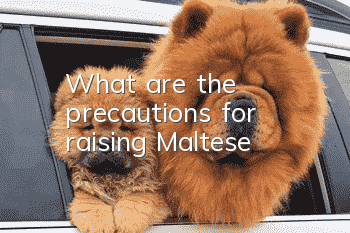Difficulty and techniques of training Tibetan Mastiff to bite

Tibetan Mastiffs are ferocious by nature. They will only obey one master, but once training fails, they will cause a lot of trouble.
Training principles
1. Step by step
The training of any kind of dog must follow the principle of gradual progress, especially the training of Tibetan Mastiff.
Because Tibetan Mastiffs are not easy to train and their conditioned reflexes are slow to establish, they must be gradually improved during the training process and cannot be rushed for success.
2. Adjust measures according to dog conditions
According to the personality, quality characteristics and neurological types of different Tibetan Mastiffs, the training direction, training subject selection and training progress must be tailored to the dog's conditions and treated separately.
Dogs with different types and behavioral responses should be treated separately. There are several categories: excited, lively, quiet, mixed, passive defense type, active defense type, food reflex type, and exploration response type. Stronger type.
In the actual training process of Tibetan Mastiffs, Tibetan Mastiffs are classified into three types: mixed type, type with strong active defense, and type with strong food reflex.
Three Consolidation and Improvement
Because Tibetan Mastiffs are slow to establish conditioned reflexes during training and tend to fade away easily. Therefore, during training, it is necessary to continuously consolidate the abilities that Tibetan Mastiffs have developed, and on the basis of consolidation, increase the content and difficulty of training.
Consolidation refers to strengthening the stability and solid foundation of Tibetan Mastiff abilities, while improvement refers to new developments and breakthroughs based on the original foundation.
However, it should be noted that there is a limit to improvement, and it cannot exceed the physiological activity limit of the Tibetan Mastiff.
END
Difficulty and skills of training Tibetan Mastiff to bite
A Tibetan Mastiff’s desire to hold is not strong
Since the Tibetan Mastiff’s main character trait is ferocity, it is easy to become hostile to people or objects, which is an advantage in training.
However, Tibetan Mastiffs are not very possessive of objects and thus have a low desire to take them. This is a disadvantage in training.
In actual training, training techniques that use strengths to overcome weaknesses should be used. Use the Tibetan Mastiff's hatred of objects to cultivate and train its possessiveness.
Second Tibetan Mastiff’s conditioned reflex is slowly established during training
It may be due to the loyal and simple nature of Tibetan Mastiff that it fully exhibits the characteristics of "one muscle" during training, which is also a difficulty that hinders the training process.
In order to overcome this difficulty, the training technique of "starting early to gain strength" should be adopted, that is, the training of Tibetan Mastiff puppies should be carried out in advance to cultivate their abilities in all aspects from the puppy stage.
TripitakaMastiffs can withstand extreme amounts of stimulation during training
The Tibetan Mastiff can withstand a greater amount of mechanical stimulation than other dog breeds, so whether it is Tibetan Mastiff puppy training, obedience training, or bite training, high-intensity stimulation must be applied. Otherwise, it will be difficult for the dog trainer to control the Tibetan Mastiff.
4. How to use the Tibetan Mastiff’s strong hatred and active defense to carry out training
1. Cultivate the Tibetan Mastiff’s hatred and active defense
The environment in which the original Tibetan Mastiff lived cultivated the Tibetan Mastiff's ferocious characteristics. However, due to large-scale artificial breeding, they have lived with humans for a long time, which has reduced its natural ferocity. To be used as a biting, hunting, or guarding dog, its ferocity must be restored.
2. Practical biting training
Because Tibetan Mastiffs are naturally bold, there is no need to deliberately train them in the sound and complex environment of biting. The training of Tibetan mastiffs and multi-headed dogs to hunt together should be strengthened, which is a need for actual combat.
- Do I need to shave my lanugo hair when my gray Teddy returns to gray?
- The difference between Australian animal husbandry and border animal husbandry
- What to do if your dog vomits without eating
- How to take care of a newborn dog? The life of a newborn dog is very fragile!
- What should I do if my dog scratches my skin? A poop scavenger must know how to handle it urgently
- What does a dog's hunger strike mean? You must pay more attention to your dog!
- Golden Retriever has pimples and scabs on his back. What should you pay attention to to prevent dog skin diseases?
- How to get a female dog into estrus that is not yet in estrus and determine the dog’s condition in a timely manner
- What should I do if my Border Collie’s coat color is not good? You can feed seaweed powder to your dog.
- What kind of dog is Sham? Are you sure you heard it right?



